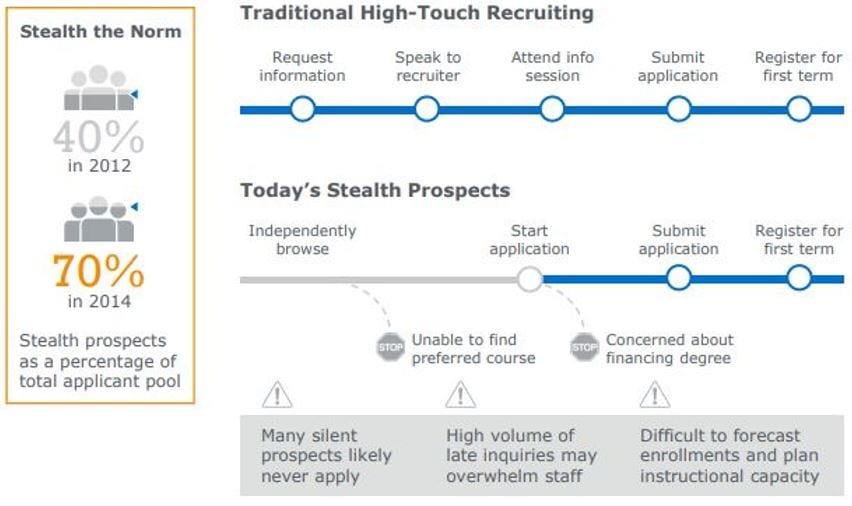Over the past year, the Professional & Adult Education Forum has been investigating programs members wanted us to ‘secret shop.’ Through our efforts, we’ve identified the stage where recruitment strategy tends to falls short: prospect phone conversations.
Today’s adult student is likely silently shopping and comparing programs independently, so you can’t afford to miss out on the few opportunities to interact with your prospective students.
To make the most of phone conversations, be sure to:
- Learn about prospective students’ interests and motivations
- Tailor advice and recruitment messages based on what you learned
Understand how recruiting stealth prospects is unique

When students submit an inquiry on your program webpage or reach out via email, they have already progressed through their own search process. Typically, they’ve already compared programs and now have specific questions.
But traditional recruitment interactions often focus on providing information about the program itself—not what stealth prospects are looking for. Therefore these conversations don’t convert as many prospects to applicants.
Instead, build rapport with students to ensure they feel heard and supported during the recruitment process. When one of our secret shoppers expressed concern about scheduling classes, an administrator shared that she was able to earn a master’s degree while working full-time with a family. This encouragement and connection can make prospective students much more optimistic about applying.
Use follow up conversations to learn prospective students’ needs and motivations
During our secret shopping exercise, administrators thoughtfully answered questions and provided support. However, recruitment staff often missed opportunities to learn more about the student and risked repeating information already available on the program website.
Asking the question “Where are you headed and how can our program help you get there?” not only makes the student feel valued, but provides administrators with important information about their target demographic. Ask students three critical questions:
- What are some considerations you’re weighing as you choose a program?
- What are your educational goals?
- What responsibilities occupy most of your time?
Get our Follow-up Conversation Scripting Tool
Newly identified characteristics can inform recruitment
Once you know students’ demographics and motivations, you can tailor recruitment efforts. Today’s prospective students expect highly personalized outreach when inundated with messages from other institutions and training options. Deliver segmented messaging based on the needs and goals of students who inquired about the program.
For example, if you find prospective students typically work full time, be sure to highlight flexible modality and scheduling options. Offer to connect prospective students with a current student who may have a similar background (e.g., full-time working professional). Reassuring students the program can fit into their busy lives and introducing them to a “student like me” can help students envision success at your institution.
Build a smarter customer segmentation strategy
Download our segmentation briefing sheet on motivations to learn more about students’ characteristics informing recruitment.
How to recruit the silent funnel
Download our complimentary white paper for three key ways to prompt inquiries from ‘stealth prospects,’ increase yield in this market and capture re-enrollments.


